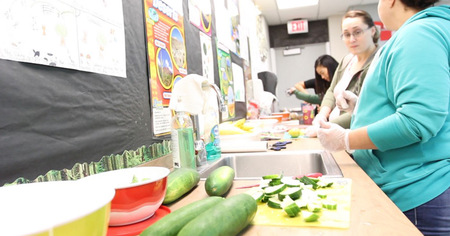NAA reached out to several youth development organizations around the country and asked the question:
"What creative approaches have you seen in securing funding to support inclusive programs and practices?"
Two submissions featured in this article, reflective of Unified Theater and Wyoming Afterschool Alliance, respectively, exemplify unique and out-of-the-box thinking to both fund and sustain inclusive programs in their communities.
Laura McLelland | Managing Director, New Ventures at Kids Included Together
During my time as CEO of Unified Theater, I thought a lot about how we could find more funds to support inclusion training. Inclusive theater was our mission, so this was always a priority—and we had multiple groups who needed ongoing training and support.
Our staff wanted to stay on the forefront of the field. Our partner teaching artists wanted more practical skills for working with kids of all abilities. Our teacher advisors used the professional development to support their work with UT and their classroom practice.
Because there was such a demand, we tried to include training wherever possible when fundraising. Two strategies took root: We sought out capacity building grants from funders like our local arts council that we could use to build our internal knowledge base—especially useful for training targeted at our employees. And we tried to build training as an activity into all our program operation grants. Since we had an inclusive participant group in all our programs, building our advisors' and teaching artists' skills was a clear benefit.
Many programs working with youth can make a case for needing a volunteer or staff group capable of supporting all abilities. If PD becomes part of the regular program budget—same as you might include evaluation or an admin allocation—there's always a pool of funds available for building your inclusive practice and supporting behavior needs as they arise.
Linda Barton | Wyoming Afterschool Alliance
In 2015, Wyoming Afterschool Alliance, NAA's state affiliate in Wyoming, developed a Juvenile Justice initiative to reduce the school-to-prison pipeline, with funding from the Newell B. Sargent Foundation.
We knew anecdotally that there is a link between behaviors and youth incarceration. Through a series of surveys to understand the existing system given to school resource officers, afterschool programs and key stakeholders in juvenile justice, we learned that the No. 1 response was behavior management issues, which supported our premise.
From this data collection, we expanded our next funding proposal to include behavior management training in response to these needs, utilizing the services of KIT for their expertise in behavior management and inclusive practices. Now, our model is focused on these strategies to ensure all children are being served with appropriate practices from skilled providers, as early as kindergarten.
This additional component in juvenile justice reform is key in minimizing more intensive and costly punitive methods and is highly effective in reaching every child early enough to redirect their path to success.
Edited by Amy L Charles, Editorial Director for AfterSchool Today.
This article originally appeared in the Summer 2019 issue of AfterSchool Today.




